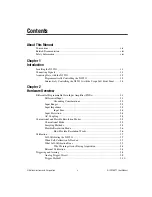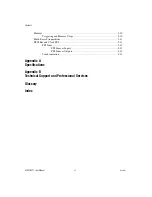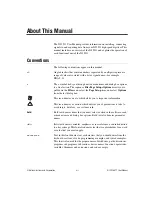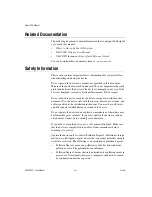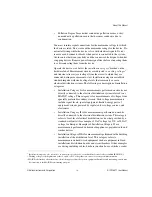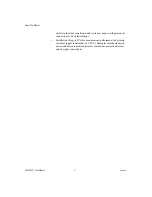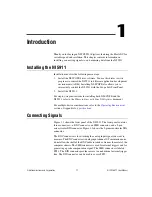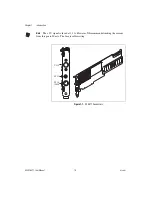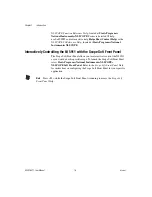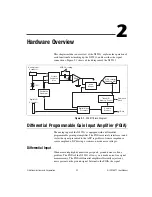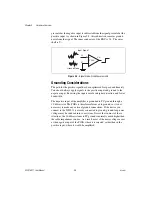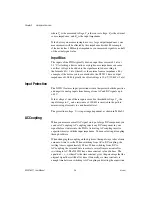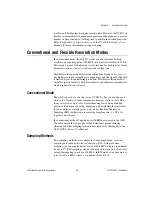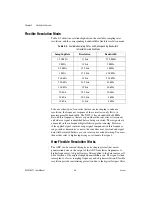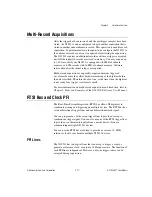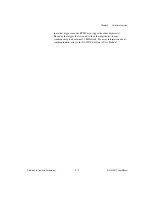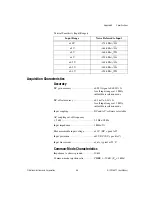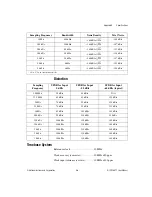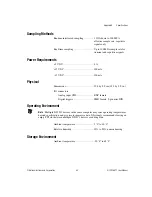
Chapter 2
Hardware Overview
©
National Instruments Corporation
2-5
to allow an 8-bit digitizer to acquire accurate data. However, the NI 5911 in
flexible resolution mode is much more precise and thus requires a greater
number of time constants of settling time to achieve the desired precision.
Refer to Appendix A,
Digitizer Basics
, of the
NI-SCOPE Software User
Manual
,
for more information on input coupling.
Conventional and Flexible Resolution Modes
In conventional mode, the NI 5911 works as a conventional desktop
oscilloscope, acquiring data at 100 MS/s with a vertical resolution of 8 bits.
This mode is useful for displaying waveforms and for deriving waveform
parameters such as slew rate, rise time, and settling time.
Flexible resolution mode differs from conventional mode in two ways: it
has higher resolution (sampling rate dependent), and the signal bandwidth
is limited to provide antialiasing protection. Flexible resolution mode is
useful for spectral analysis, distortion analysis, and other measurements for
which high resolution is crucial.
Conventional Mode
The ADC converts at a constant rate of 100 MS/s, but you can choose to
store only a fraction of these samples into memory at a lower rate. This
lower rate allows you to store waveforms using fewer data points and
decreases the burden of storing, analyzing, and displaying the waveforms.
If you need faster sampling rates, you can use Random Interleaved
Sampling (RIS) to effectively increase the sampling rate to 1 GS/s for
repetitive waveforms.
In conventional mode, all signals up to 100 MHz are passed to the ADC.
You must ensure that your signal is band-limited to prevent aliasing.
Aliasing and other sampling terms are described more thoroughly in the
NI-SCOPE Software User Manual
.
Sampling Methods
Two sampling methods are available in conventional mode:
real-time
sampling
and
random interleaved sampling (RIS)
. Using real-time
sampling, you can acquire data at a rate of 100/
n
MS/s
,
where
n
is a number
from 1 to 2
24
. RIS sampling can be used on repetitive signals to effectively
extend the sampling rate above 100 MS/s. In RIS mode, you can sample at
rates of 100
×
n
MS/s, where
n
is a number from 2 to 10.

